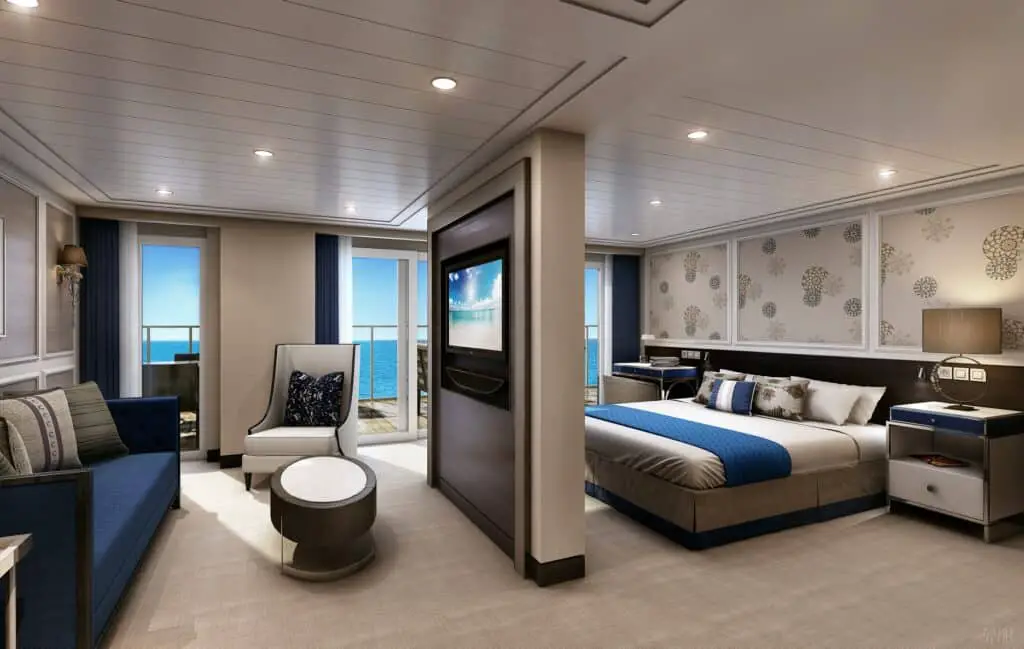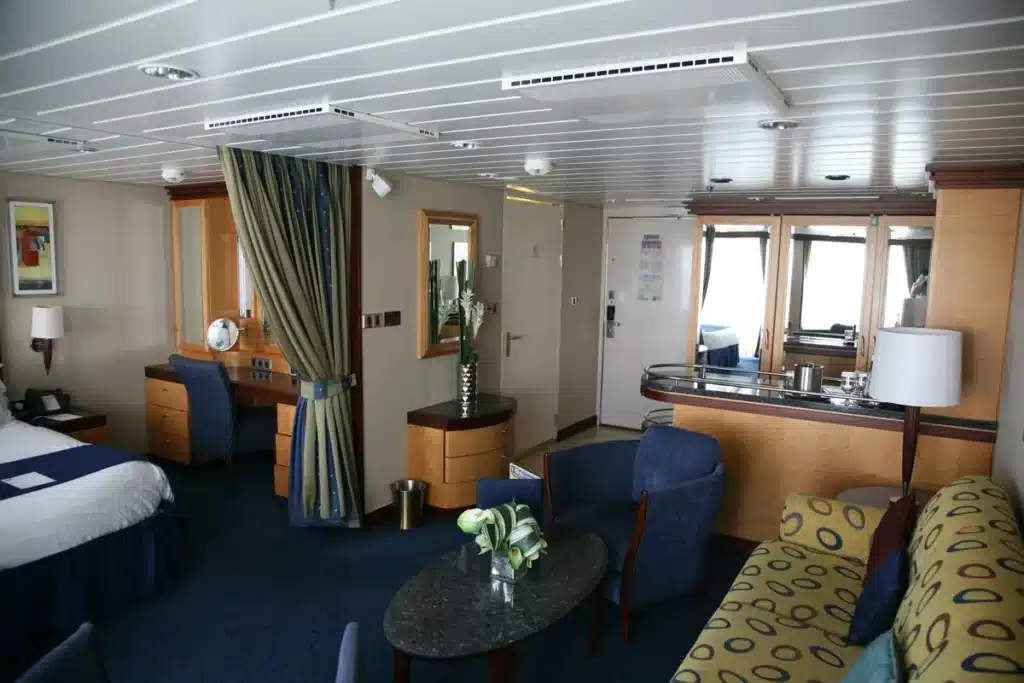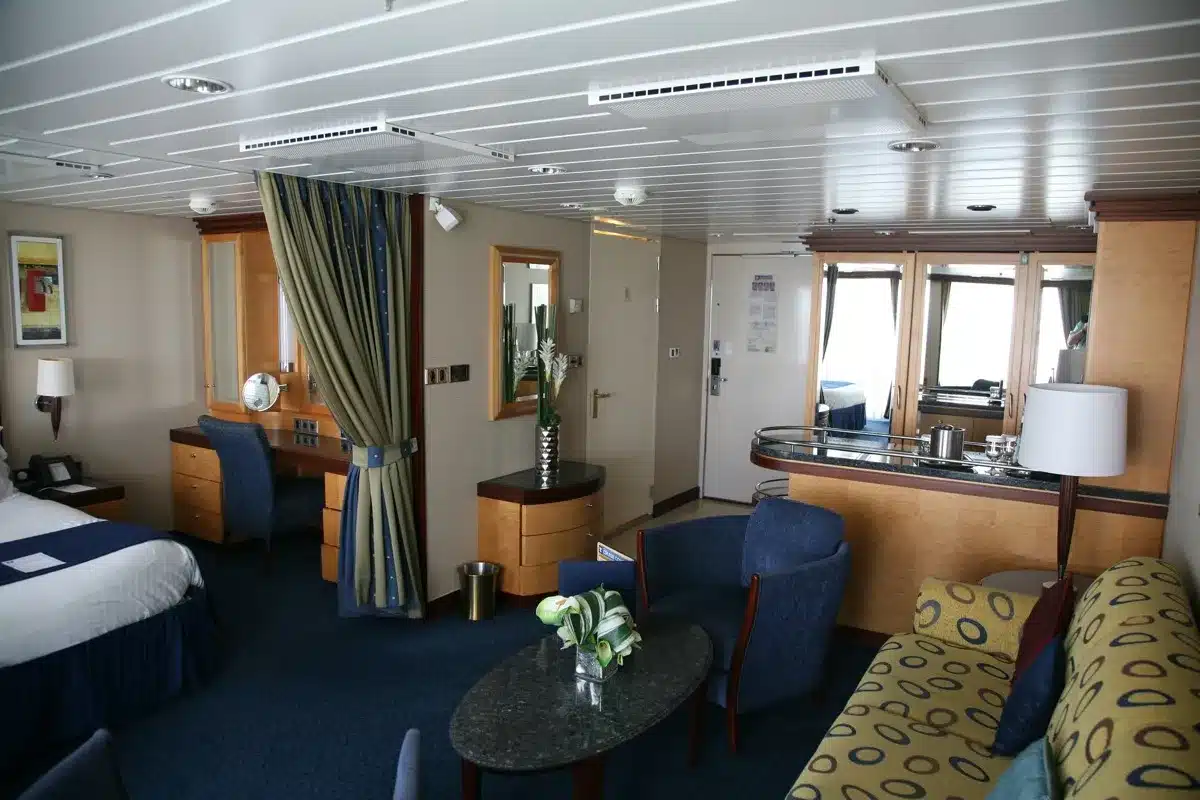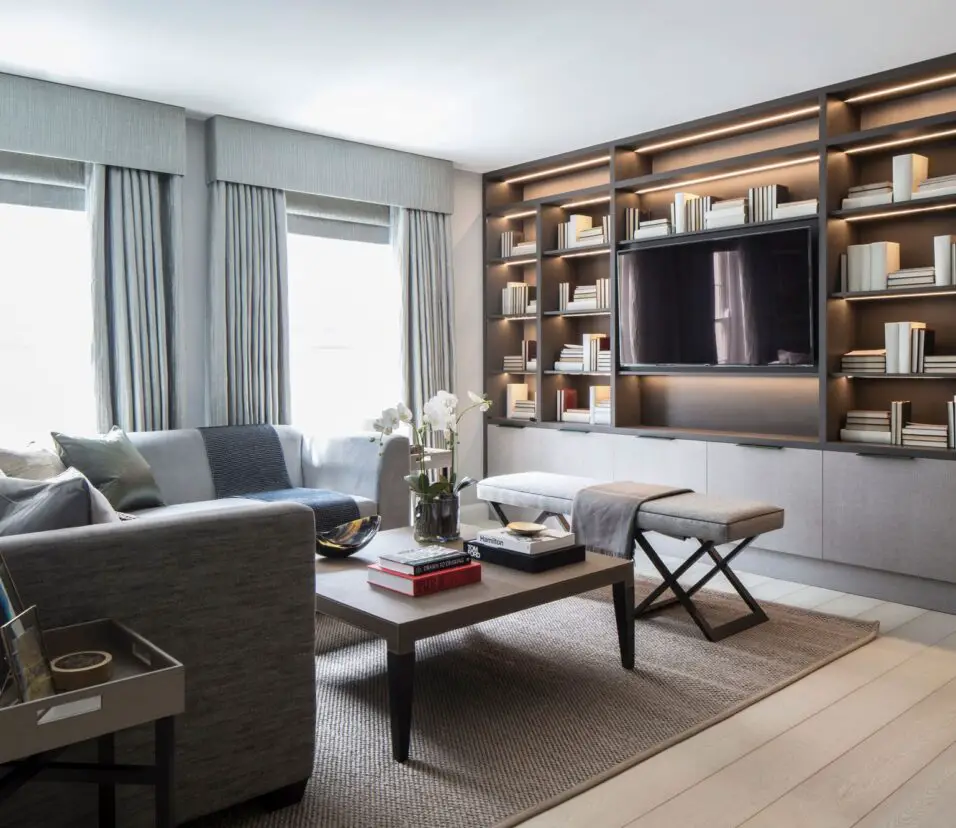Are Interior Cruise Rooms Bad
Introduction
Are Interior Cruise Rooms Bad: When it comes to planning a cruise vacation, one of the most important decisions to make is choosing the type of room you will stay in. With a wide range of options available, it can be overwhelming to decide which one is right for you. One common question that arises is whether interior cruise rooms are a good choice or not. In this article, we will explore the pros and cons of interior cruise rooms to help you make an informed decision for your next cruise adventure.
Firstly, let’s understand what an interior cruise room is. As the name suggests, these rooms are located in the interior of the ship and do not have windows or balconies. They are typically smaller in size compared to other room types and are often more affordable. While some may perceive interior rooms as being less desirable, they do have their own unique advantages.
One of the main advantages of interior cruise rooms is their affordability. If you are on a budget or prefer to spend your money on other aspects of the cruise experience, such as excursions or onboard activities, an interior room can be a great option.
Additionally, interior rooms offer a sense of tranquility and darkness that can be appealing to some travelers.

Are inside cabins on a cruise OK?
Despite being the smallest, most basic cruise ship cabins, I find that I actually like these rooms. Not only do inside cabins save me money, but I find they come with extra perks as well. From a quieter cabin to a perfect night’s sleep, I’ll never complain about cruising in a cozy inside room.
When it comes to choosing accommodations for a cruise, one of the options that travelers often consider is an inside cabin. These cabins, as the name suggests, are located on the interior of the ship and do not have windows or balconies. While some may be hesitant about booking an inside cabin, there are several factors to consider before making a decision.
Firstly, inside cabins are generally more affordable compared to cabins with a view. This can be a significant advantage for budget-conscious travelers who want to experience a cruise without breaking the bank. By opting for an inside cabin, passengers can save money that can be used for other aspects of their trip, such as shore excursions or onboard activities.
Lastly, it is worth mentioning that most passengers spend the majority of their time outside their cabins, exploring the ship and participating in various activities. With numerous onboard amenities such as pools, restaurants, theaters, and lounges, there is always something to do or see on a cruise. Therefore, the absence of a window in an inside cabin may not be a significant drawback for many travelers.
How is an interior room on a cruise?
An interior stateroom is basically a box. Just a closed off room. Because it’s essentially simply a bed, you’ll want to spend most of your time outside of it exploring the ship. While it’s true that lounging on your balcony has its advantages, getting the most out of your cruise involves experiencing as much as possible on board.
Interior staterooms on a cruise ship offer customers a unique and cost-effective vacation option. On a cruise ship, passengers can choose between inside and outside accommodations. Inner cabins may not have windows or a view, but they offer other advantages that attract cruise passengers.
While interior rooms may lack windows
Cruise lines have taken steps to ensure that these cabins are still comfortable and visually appealing. The interior design of these rooms is carefully planned to maximize space and create a cozy ambiance. The use of warm colors, soft lighting, and tasteful décor can contribute to a pleasant and inviting atmosphere. Additionally, modern amenities such as flat-screen TVs, comfortable bedding, and ample storage space are often provided to enhance the overall comfort and convenience of guests staying in interior rooms.
An interior room on a cruise offers a cost-effective and peaceful accommodation option for travelers. Despite the absence of windows, these rooms are designed to provide comfort, tranquility, and a cozy atmosphere. Whether it’s for budget reasons, a desire for a quiet environment, or simply a preference for a dark sleeping space, an interior room can be a great choice for those looking to make the most of their cruise experience without breaking the bank.
What’s better on a cruise interior room or suite?
Suites: If you’re looking for luxury on your cruise, suites offer the most space and best room locations, often with separate living and sleeping areas. They generally feature large balconies, and extra amenities and perks.
Introduction:
When it comes to choosing accommodations for a cruise, one of the primary decisions to make is whether to opt for an interior room or a suite. Both options have their own advantages and considerations, and the choice ultimately depends on personal preferences and budget. In this article, we will explore the differences between interior rooms and suites on a cruise, highlighting the features and benefits of each.
Interior Rooms:
Interior rooms, as the name suggests, are located in the interior of the ship and do not have windows or balconies. These rooms are typically smaller in size compared to suites but offer a more affordable option for travelers. Despite the lack of natural light, interior rooms are well-designed and equipped with all the necessary amenities to ensure a comfortable stay. They are ideal for those who plan to spend most of their time exploring the ship and participating in various onboard activities.
One of the advantages of interior rooms is their affordability. They are often priced lower than suites, allowing budget-conscious travelers to enjoy a cruise experience without breaking the bank. Additionally, the absence of windows can be beneficial for those who prefer a darker and quieter environment for sleeping, as it eliminates any potential disturbances from outside light or noise.
Suites:
Suites, on the other hand, offer a more luxurious and spacious option for travelers. They are typically larger in size and come with additional amenities such as separate living areas, private balconies, and even butler service in some cases. Suites provide a higher level of comfort and privacy, making them an excellent choice for those seeking a more indulgent and exclusive experience.
One of the main advantages of suites is the breathtaking views they offer from their private balconies. Waking up to the sight of the vast ocean or enjoying a sunset from the comfort of your own balcony can be a truly memorable experience. Suites also provide more space for relaxation and entertainment, allowing guests to unwind in a separate living area or host small gatherings with friends and family.
What is the best room on a cruise ship?
When it comes to choosing the best room on a cruise ship, there are several factors to consider. From the size and location of the room to the amenities and views it offers, each room category has its own unique advantages. Whether you prioritize comfort, luxury, or convenience, there is a perfect room for every traveler’s preferences.
Size and Location:
The size and location of the room play a crucial role in determining its appeal. For those who prefer spacious accommodations, suites are the ideal choice. These rooms often feature separate living areas, private balconies, and even exclusive access to certain onboard facilities. On the other hand, if you are looking for a more budget-friendly option, interior cabins provide a cozy and comfortable space to rest after a day of exploring the ship’s various amenities.
Amenities:
The amenities offered in cruise ship rooms can greatly enhance the overall experience. Many rooms come equipped with luxurious features such as whirlpool tubs, private butlers, and even personal concierge services. These added perks can make your stay on the ship feel like a true indulgence. Additionally, some rooms offer exclusive access to specialty restaurants, spa facilities, or private lounges, providing an extra level of convenience and luxury.
Views:
The view from your room can greatly impact your cruise experience. Ultimately, the best room on a cruise ship depends on your personal preferences and budget. Whether you prioritize size, amenities, or views, there is a room category that will suit your needs. It is important to carefully consider your options and choose a room that will enhance your overall cruise experience, ensuring a memorable and enjoyable vacation at sea.
What is the safest room on a cruise ship?
The lower and more central you are in a ship, the less roll and sway you will feel. Even if you choose a balcony room, choose a low level and a room closest to the ship’s center. The higher decks and cabins at the front (forward) or back (aft) of the ship will rock and roll the most.
When it comes to cruise ship safety, one question that often arises is:
“”What is the safest room on a cruise ship?”” This is a valid concern, as passengers want to ensure their well-being during their voyage. While no room can be completely immune to accidents or emergencies, certain factors can contribute to a safer experience on a cruise ship.
Factors to Consider:
Several factors play a role in determining the safety of a room on a cruise ship. One important consideration is the location of the room. Cabins located on lower decks tend to be more stable during rough seas, reducing the risk of seasickness or falls. Additionally, rooms situated closer to emergency exits and lifeboats can provide quicker access to safety measures in case of an evacuation.
Another factor to consider is the type of room. Interior cabins, which do not have windows or balconies, may offer a higher level of safety during extreme weather conditions or emergencies. These rooms are less likely to be affected by broken glass or debris. However, it is important to note that interior cabins may not be suitable for passengers who experience claustrophobia or prefer natural light.
Additional Safety Measures:
In addition to the location and type of room, cruise ships have implemented various safety measures to ensure the well-being of their passengers. These measures include the presence of smoke detectors, sprinkler systems, and fire-resistant materials throughout the ship.
The overall perception of interior cruise rooms varies among individuals, as it largely depends on personal preferences and priorities. Some may consider interior cruise rooms a budget-friendly way to cruise. Despite being smaller and without windows or balconies, these rooms are comfortable and functional for passengers to relax.
On the other hand
Some individuals may have a less favorable perception of interior cruise rooms. The lack of natural light and views can make these rooms feel somewhat claustrophobic for some passengers. The lack of windows prevents access to fresh air and seaside noises. However, cruise ships include many amenities and public spaces to offset the limitations of inner rooms.
Are there any specific drawbacks or disadvantages associated with interior cruise rooms?
Potential passengers should be informed of some interior cruise room drawbacks. Lack of natural light is a major issue. Due to their central location in the ship, inside rooms lack windows and balconies, denying guests ocean vistas and natural light. This may make the room feel cramped for individuals who like waking up to a view or having a balcony.
Another disadvantage of interior cruise rooms is the potential for noise. Since these rooms are located in the middle of the ship, they are more likely to be affected by noise from common areas, such as the dining halls or entertainment venues. This can be bothersome for light sleepers or those who prefer a quieter environment.
How do interior cruise rooms compare to other types of accommodations on a cruise ship?
When comparing interior cruise rooms to other types of accommodations on a cruise ship, there are several factors to consider. One of the main differences is the lack of natural light in interior rooms. Unlike ocean view or balcony cabins, interior rooms do not have windows or access to the outside.
However, interior cruise rooms do have their advantages. Those who are sensitive to light and noise when sleeping may benefit from a darker, quieter atmosphere without windows. Most cruise ships offer internal guests amenities and activities, so you may still enjoy cruise ship entertainment and public places.
Are there any benefits or advantages to choosing an interior cruise room?
Choosing an interior cruise room can offer several benefits and advantages for certain individuals or groups. One of the main advantages is the cost-effectiveness of these rooms. Interior cruise rooms are typically more affordable compared to other types of accommodations on a cruise ship, such as ocean view or balcony rooms. This can be particularly appealing for budget-conscious travelers or those looking to save money on their cruise experience.
Another benefit of choosing an interior cruise room is the potential for better sleep quality. These rooms are located in the interior of the ship, away from external noise and light. This can create a quieter and darker environment, which can be conducive to a good night’s sleep. For individuals who prioritize rest and relaxation during their cruise, an interior room can provide a peaceful sanctuary.
What factors should be considered when deciding whether interior cruise rooms are suitable for a particular individual or group?
Firstly, budget plays a crucial role. However, these lodgings may lack amenities and views found in higher-priced cabins.
Secondly, the preferences and needs of the individuals or group should be considered. However, people who enjoy natural light, scenic vistas, or claustrophobia may prefer cabins with windows or balconies.
Additionally, the size and layout of the interior room should be evaluated. While cruise ship cabins are generally compact, interior rooms tend to be smaller and may feel more confined. This can be a factor to consider for individuals or groups who require more space or have mobility concerns.

Conclusion
The threshold is a horizontal component situated at the lower portion of the door frame, precisely beneath the door. Threshold is the lowest barrier of the door frame and is commonly crossed while entering a building. The threshold is the horizontal section of the door frame below the door. Accessing a structure often involves crossing the threshold, the door frame’s lowest boundary. A threshold’s principal purpose is to seal a door’s bottom from drafts, dampness, and vermin.
Unlike ocean-view or balcony rooms, interior rooms are typically located in the center of the ship, away from windows. This can make the space feel confined and disconnected from the outside world. Therefore, the limited time spent in the room may not be a significant concern for many travelers.
Another aspect that may contribute to the perception of inside cruise rooms as bad is the potential for noise disturbances. However, cruise lines are aware of this issue and have taken measures to minimize noise disruptions, such as soundproofing the rooms or using quieter propulsion systems. Additionally, many passengers find that the hum of the ship’s engines can be soothing and even help them sleep better.




